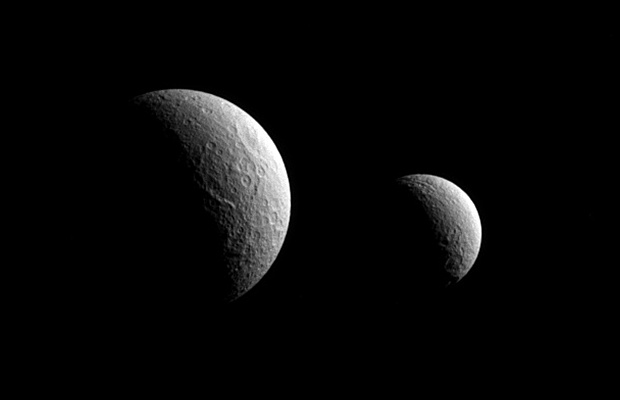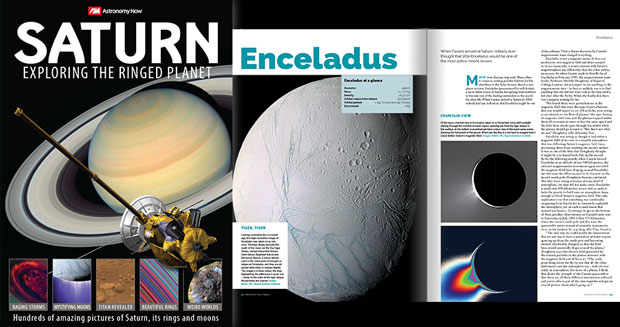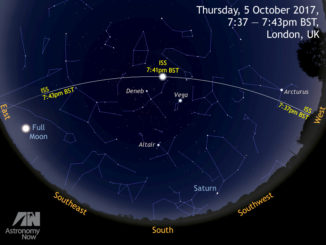
The moons are named for sisters — two Titans of Greek mythology. Although somewhat different in size, Rhea (949 miles or 1,527 kilometres across) and Tethys (660 miles or 1,062 kilometres across) are medium-sized moons that are large enough to have pulled themselves into round shapes. They are both composed largely of ices and are generally thought to be geologically inactive today.
The view looks toward the anti-Saturn sides of Tethys and Rhea. North on both moons is up. The image was taken in visible red light with the Cassini spacecraft narrow-angle camera on 11 October 2015.
The two moons appear close together here, but Tethys was about 220,000 miles (360,000 kilometres) farther away from Cassini when the image was captured — nearly the distance from Earth to our Moon. Thus, the view does not accurately reflect the bodies’ relative sizes.
The image was obtained at a distance of approximately 708,000 miles (1.14 million kilometres) from Rhea. Image scale on Rhea is 4 miles (7 kilometres) per pixel. Tethys was 930,000 miles (1.5 million kilometres) away during this observation and has a pixel scale of 6 miles (9 kilometres) per pixel.
Saturn: Exploring the Ringed Planet
Find out more about Saturn and its moons in this 196-page special edition from Astronomy Now. Order from our online store.




